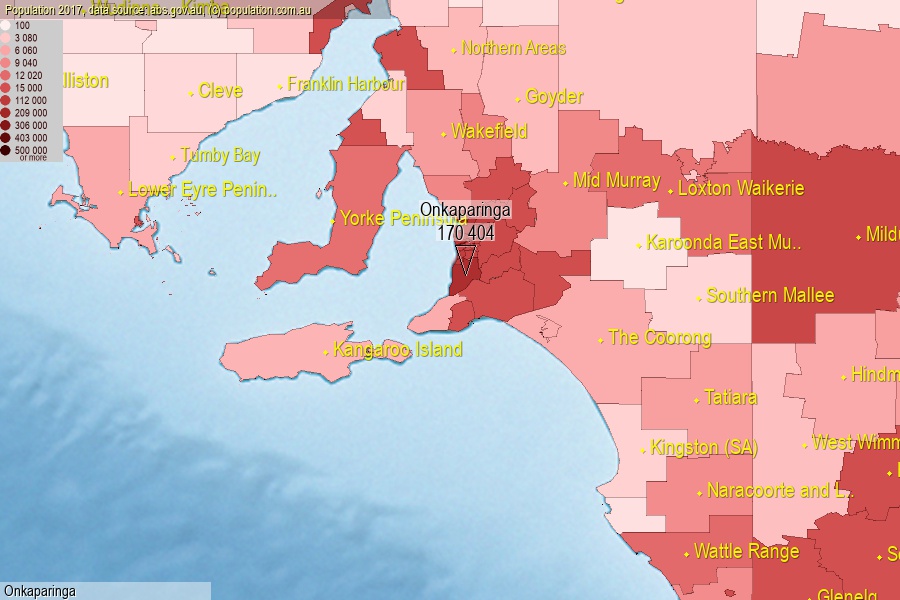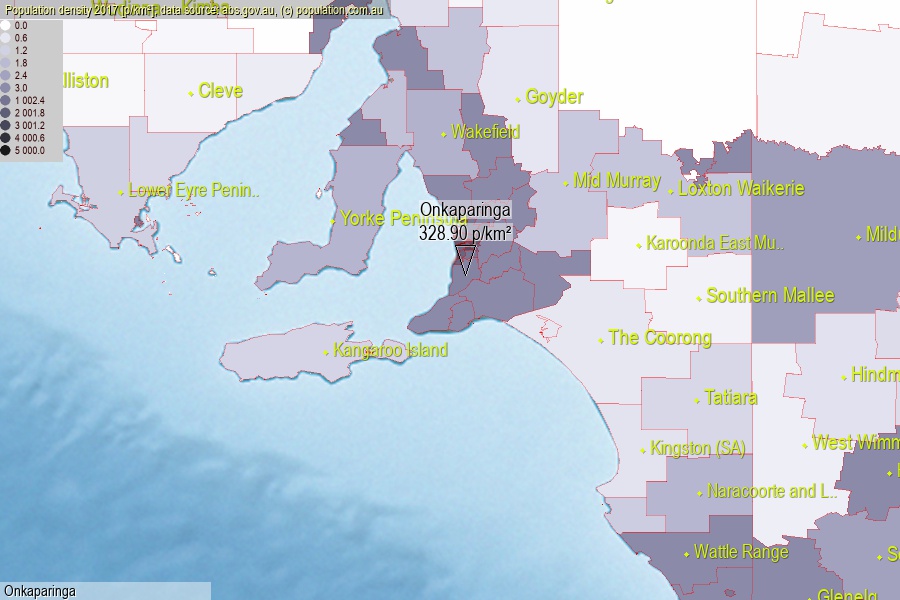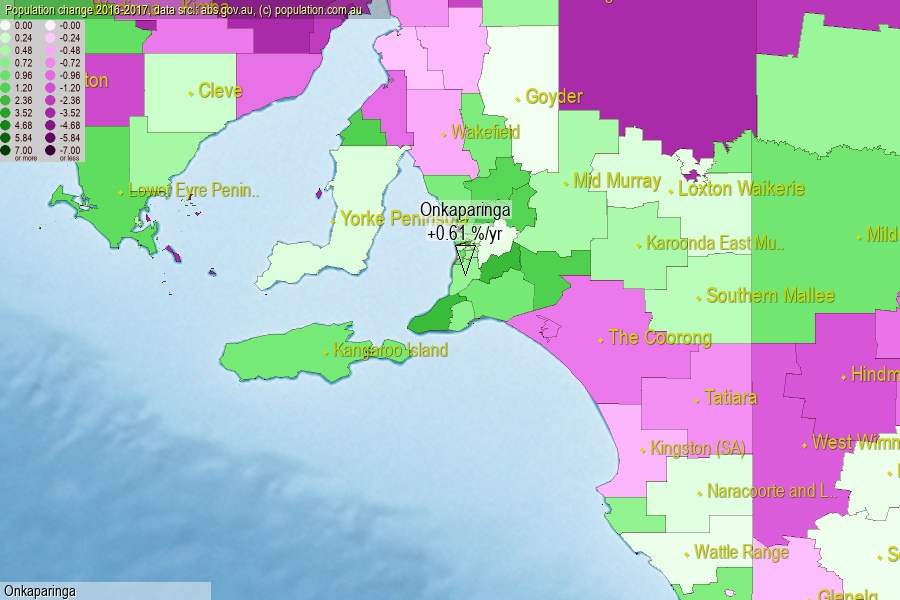 population.com.au
population.com.auLast official estimated population of Onkaparinga City (as Local Government Area) was 170 404 people (on 2017-06-30)[2]. This was 0.69% of total Australian population and 9.83% of SA population. Area of Onkaparinga is 518.10 km², in this year population density was 328.90 p/km² . If population growth rate would be same as in period 2016-2017 (+0.61%/yr), Onkaparinga population in 2025 would be 178 890. [0]



Click to enlarge. Onkaparinga is located in the center of the images.
Population [people], population density [p./km²] and population change [%/year] [2]
[1996-2001] +0.75 %/Y
[2001-2002] +0.35 %/Y
[2002-2003] +0.19 %/Y
[2003-2004] +0.15 %/Y
[2004-2005] +0.50 %/Y
[2005-2006] +0.88 %/Y
[2006-2007] +1.04 %/Y
[2007-2008] +1.25 %/Y
[2008-2009] +1.59 %/Y
[2009-2010] +1.45 %/Y
[2010-2011] +1.12 %/Y
[2011-2012] +1.00 %/Y
[2012-2013] +0.73 %/Y
[2013-2014] +0.68 %/Y
[2014-2015] +0.63 %/Y
[2015-2016] +0.56 %/Y
[2016-2017] +0.61 %/Y
[0] Calculated with linear interpolation from officially estimated population
[1] Read more about LGA and Australian Statistical Geography Standard (ASGS) on abs.gov.au
[2] Population data from Australian Bureau of Statistics (Population and density: 2017; change: 2016-2017)
[3] Digital Boundaries: Australian Statistical Geography Standard (ASGS) 2016.